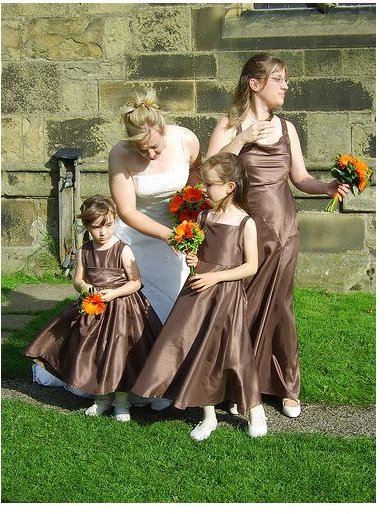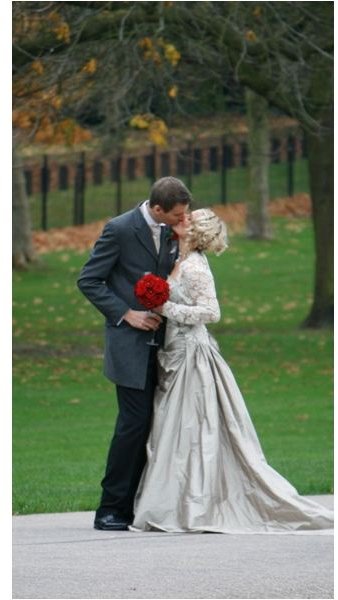How to Shoot Wedding Videos: Tips on Filming Weddings
When you start to shoot a wedding video you have to be prepared to work all day without a break! Shooting weddings requires active participation because there will always be something to shoot, whether it’s the ceremony itself, cutaways, family and friends’ speeches and the reception. Everything happens at a lightning pace and you can’t miss any of it.
Locations
At least the day before, visit the location where the wedding will take place. The most convenient time is usually during the wedding rehearsal. This is when you’ll get an idea of where everyone will be standing. It’s always helpful to meet the wedding coordinator so that he or she may assist you with the details, such as exact times and order, wedding party placement, wedding length, reception set up, etc.
When you’re visiting the location(s), locate places to set up the camera(s), location of the power sockets; look at the lighting condition, especially where the wedding party will be standing; how will everyone fit into frame? Will you need to bring lights just in case? How large is the room?
Think about how and where you’ll be connecting and placing your audio. Will you be using lapel microphones? A digital recorder? Is the location able to record audio on a separate disk for backup? You may also choose to use the audio from a static camera up front just in case. Does the location have any rules that may restrict your ideas? Plan for the unexpected.
Equipment
Make a checklist of everything you’ll need and make absolutely certain you have everything ready to go: camera(s); blank tapes (about five for each camera), film stock, etc.; additional lens; tripod(s); BATTERIES (plan to bring extras if you have them); audio equipment; lighting; etc. If you’re shooting with more than one camera, now is a good time to make sure all the cameras are set on the same settings: aspect ratio, fps, gamma, etc.
You’ll need to white balance each camera on location once they’re set up. However, if you need to move a camera around during the service, you may want to set the white balance on that camera to automatic.
If this is a multi-camera shoot, you’ll also need an additional camera operator or two to help you on the day of the wedding. Work out their pay or any bartering services beforehand.
Camera and Placement

To get the best shots possible of the wedding ceremony, it’s best to have at least two or three cameras (preferably the same brand all set on the same settings!). To save the camera’s battery power for the reception, bring a couple of extension cords to use during the ceremony. Since the camera(s) will most likely be on a tripod during the ceremony versus the reception, this is the best time to save your battery power.
The following is a basic camera setup plan for a wedding service and will certainly differ depending on the actual location. Remember, use your eye to get the best angle and composition:
-
Set a camera up in the back, preferably at a higher angle where no one can block the frame (for instance, from the balcony). The closer to the center aisle, the better. This camera should be able to capture the entire wedding party and perhaps even the guests. You may choose to keep this as a master shot and/or a static shot; however, you may also want to also use this camera to zoom in during key points.
-
Set another camera at about a 45-degree angle from the front on either side, either facing the bride or groom. This camera should be able to capture special highlights of the service up close and the entertainment, if any.
-
If possible, another camera should be placed in the front, except facing the bride and groom from the other direction - perhaps even an OTS (over-the-shoulder) shot of the minister or priest. This shot works great for the seating of the parents, bride and groom’s vows and any close-up reaction shots. If you position this camera right, you shouldn’t be able to see another camera/ camera operator in the shot. Try zooming in - this camera should always have an operator.
You don’t necessarily have to keep one camera static the entire time, but if you feel you should, choose the camera that frames the widest shot. You can rely on the camera that has the widest shot because it will be able to capture the important points taking place. When you edit, if the other shots from the other cameras aren’t what you want, you can cut to this shot for backup.
If you’re using more than one camera, come up with a simple game plan with the other camera operators. For instance, see to it that they only capture close-ups while you shoot the pans and zooms and any other shots.
Cutaways
Cutaways work great when using them creatively. Think: “Shoot to edit”. You can never have enough cutaways, which saves you in post. Cutaways may be used as montage sequences during opening/closing titles, mattes, establishing shots, DVD menu and labels and transitions.
You’ll definitely need cutaways from both the wedding ceremony and the reception. Therefore, plan to shoot the cutaways of the ceremony right before the wedding. If possible, use a separate tape from the one the service will be recorded on. You certainly don’t want to run out of tape during the service! For the reception, shoot cutaways before the reception and in between the highlights.
Some cutaway shot ideas include: flowers and bows on the pews, exterior of location with sign–perhaps with cars pulling up, water fountains, wedding cake, candles at the wedding service or center pieces at the reception, wine glasses, crowd mingling/eating/entering, etc. Cutaway shots don’t necessarily have to be static; you may use pans and tilts, zooms, etc. Don’t overuse any one of them though!
Things to Keep in Mind
Know what’s expected of you - Depending on the agreement you’ve set up with the bride and groom, what to shoot will determine the plan they’ve arranged beforehand. Make sure you know what they want before you begin shooting. This may save you lots of footage, energy, space and time, especially when you’re editing! A basic package plan some videographers set up usually includes just the ceremony and the highlights of the reception. However, if the package is extended, this could include additional footage, such as the bride and groom getting ready, a slideshow, after party, etc. It’s up to what they want when deciding what to shoot.
Dress appropriately - Button-up blouses, dress shirts, slacks and comfortable dress suits are preferable. You’ll be doing a lot of moving around, kneeling and bending so wear comfortable dress shoes.
Work well with others - Get to know all the vendors who’ll be helping out with the wedding: wedding coordinator, photographer, DJ, musicians, singers, etc. Everyone needs to work together and these people can help you. Making good relationships can also lead to networking and future opportunities. If there’s a wedding photographer, ask him or her if you may use some of their photos for a video slideshow.
References
Written based on author’s own experience.
Image credits:
